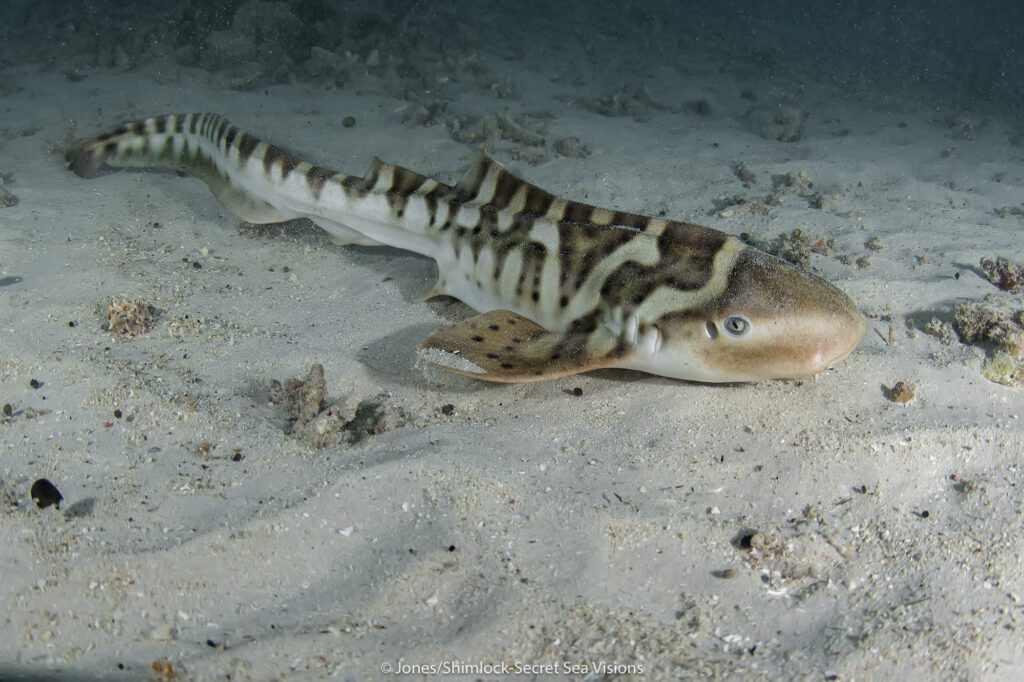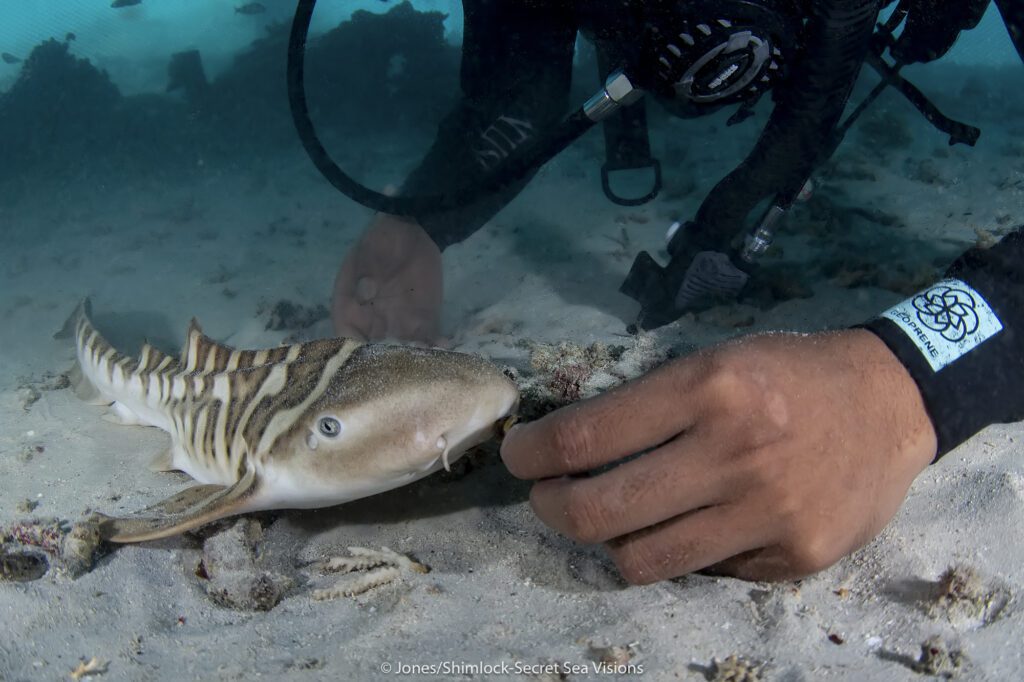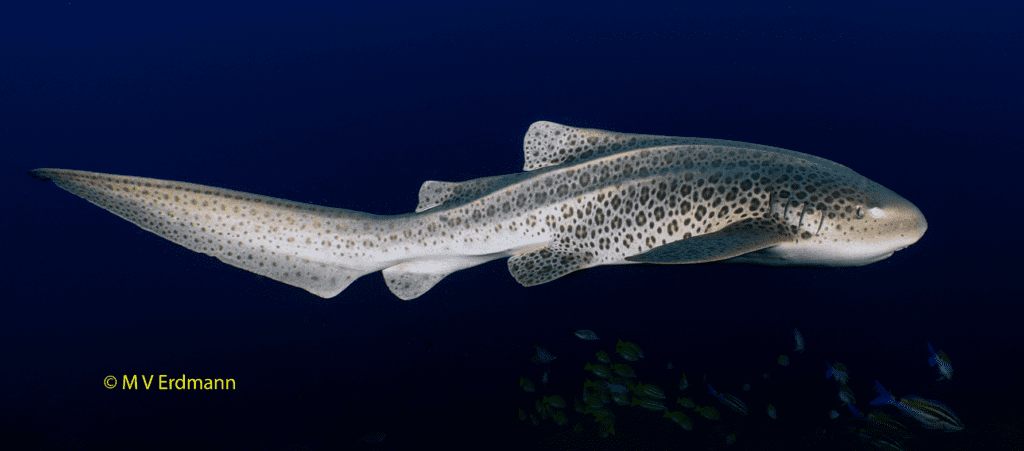ReShark/StAR update featuring “Mali”: A Multifaceted Trip part 2 by Burt Jones
Administrator’s note: This post is part 2 of my “multifaceted” journey to Raja.
Since late 2021 we have been posting about the StAR Project and its ambitious umbrella initiative, ReShark. You can follow these links on the Bird’s Head Seascape website to learn more. Additionally, you can search this website for other articles and updates about StAR and ReShark.
But for those reading about these projects for the first time, here’s a bit of backstory:
ReShark is an international collective of over 75 conservation organizations, aquariums, and government agencies from 15 countries including 44 aquariums. Dedicated to recover threatened sharks and rays around the world by reestablishing healthy, genetically diverse, and self-sustaining populations, ReShark’s goal is to release 500+ zebra pups over a 10 year period. Restoring sharks to their native ranges will balance ecosystems, as these important predators maintain the food web and serve as indicators for broader ocean health. Visit the ReShark website.
StAR is ReShark’s first project, which is currently in the process of re-wilding the leopard/zebra shark (Stegostoma tigrinum) to one of its former native ranges, our Raja Ampat. Visit ReShark’s website’s StAR link to learn more about the project, including videos about building a nursery, training the shark aquarists (“nannies”), the first egg arrivals in Raja and the first pup release.
Thrive Conservation is an Indonesian Yayasan or Foundation (similar to an Indonesian NGO) whose mission is to increase the reach and effectiveness of conservation across Indonesia by empowering an emerging cohort of Indonesian conservationists. Thrive Conservation is an Indonesian partner within the StAR project.
These sharks are confusingly known by two common names zebra and leopard. The sharks are born with stripes, hence the name “zebra” and when mature, they have spots, therefore “leopard”. For this article I will refer to them as zebra sharks, to avoid confusion with a species of houndshark (Triakis semifasciata), which is also known as the leopard shark.
Currently there are two nurseries located in Raja: One in northern Raja Ampat’s Dampier Strait managed by RARCC, located on the property of Papua Diving Resorts on Kri Island. The other is in southern Raja’s Misool region, which is managed by the Misool Foundation, located on the property of Misool Resort on Batbitiem Island.
Zebra sharks are a species of carpet shark, which also includes two other well-known Bird’s Head iconic species, the wobbegong shark and the largest fish in the sea, the whale shark. In fact baby Zebra sharks look and swim like miniature whale sharks. Carpet sharks’ method of reproduction varies. Zebra sharks are oviparous, meaning the female produces several dozen large egg capsules, which they anchor to underwater structures via adhesive tendrils. These eggs hatch within four to six months depending on water temperature.
Zebra shark egg capsules, from various world wide aquariums, are being shipped to Indonesia. These eggs will be hatched at one of Raja’s two nurseries. After being raised and tagged, they are released into the wild.
Here’s how it works: After the egg capsule’s international flight, quarantine period in Jakarta, domestic flight to Sorong, and transfer to one of Raja’s two nurseries, the eggs are allowed to hatch in one of the nursery’s small rectangular aquariums. The pup is fed in that aquarium (with live food as much as possible) until it is clearly feeding well and growing. Then, on average three weeks after hatching, it is transferred into big round tank (like the one in the “post-op” image below). It continues to grow in that big round tank until it reaches about 50cm (20 inches) in size. At that point, it is RFID (Radio Frequency Identification) tagged – a simple injection procedure that inserts a “microchip” at base of fin using an injector gun. After a few more days of monitoring to ensure healing, it is released to a sea pen to begin to acclimatize to the open ocean. In the sea pen, it can forage for itself, but also gets supplemental feedings. Once it reaches 70cm (28 inches), it is ready for its internal acoustic tag operation. Post-op it is kept in the big round tank while it convalesces. Once healed and its sutures taken out, it goes back into the sea pen, where it grows until it reaches 80cm (32 inches) and roughly 1 kilogram (2.2 pounds) in weight). Then it’s ready for release into the wild.
And here is where my story begins: Prior to this trip, for all the many I have been blessed to make, I had only seen one zebra shark in the Bird’s Head (and that was in Triton Bay). Now I’ve seen two. Let me introduce you to “Mali“.
Mali is the most recent hatchling at Misool’s nursery. Mali, already RFID tagged, was in the large sea pen when I was introduced to her by Agi Zalma, aka shark “nanny” or in Agi’s case “manny”, a shark aquarist of the Misool Foundation!
Agi, and Mali’s shark “nanny” and fellow shark aquarist of the Misool Foundation, Kyra Wicaksono, feed her live clams and snails five to six times daily. Additionally they monitor her health and growth progress. One afternoon Agi invited me to enter the pen and photograph Mali feeding. I had heard a lot about Mali, so it was a thrill to finally meet her. I think you will agree she is very cute.
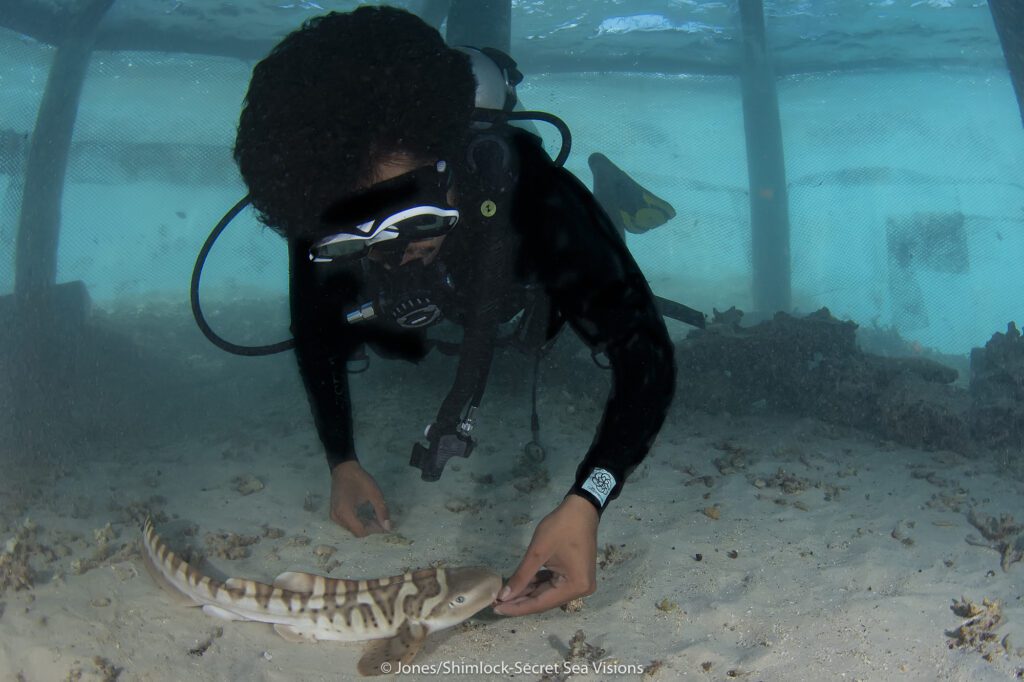
Agi begins by holding food, a snail, near Mali’s snout until she recognizes the smell as being edible.
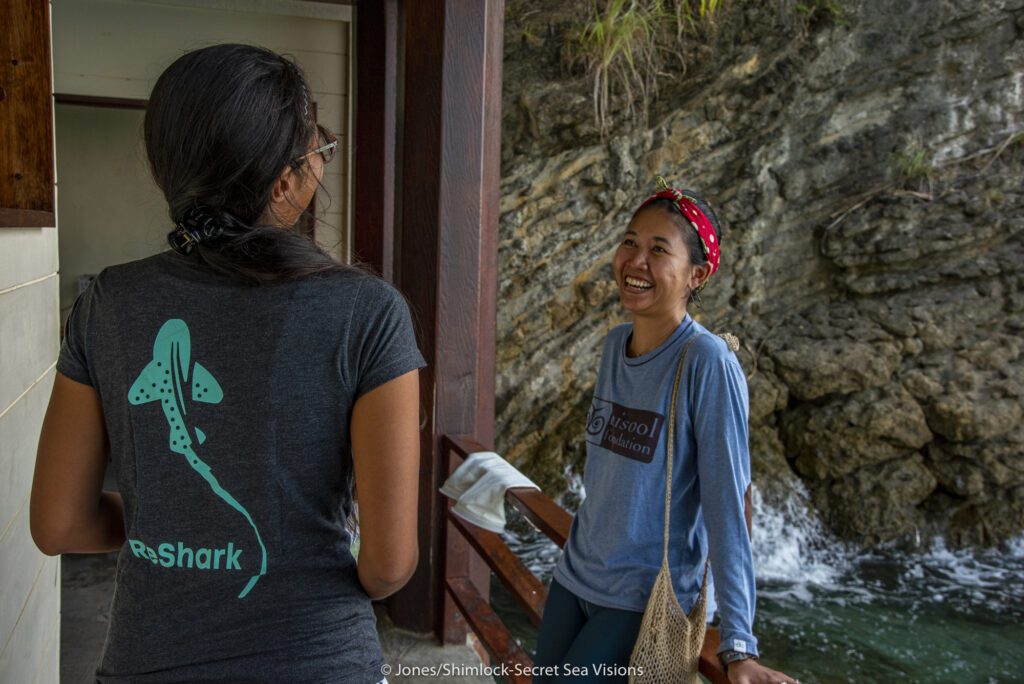
Nesha Ichida with Thrive Conservation, chats with Chairperson for the Misool Foundation, Virly Yuriken (right)
While I was at the resort, Mali had reached 70 cm, the length at which she was ready for her internal acoustic tag operation. On hand for the momentous event were StAR’s field veterinarian, Bali-based Jaya Ratha, country director of Thrive Conservation, Nesha Ichida, co-chair of the StAR Project steering committee, and Misool Foundation’s director, Virly Yuriken, along with aquarists Agi and Kyra.
Mali was a trooper and took the operation in stride. She was back in her big aquarium tank and feeding within minutes of the operation.
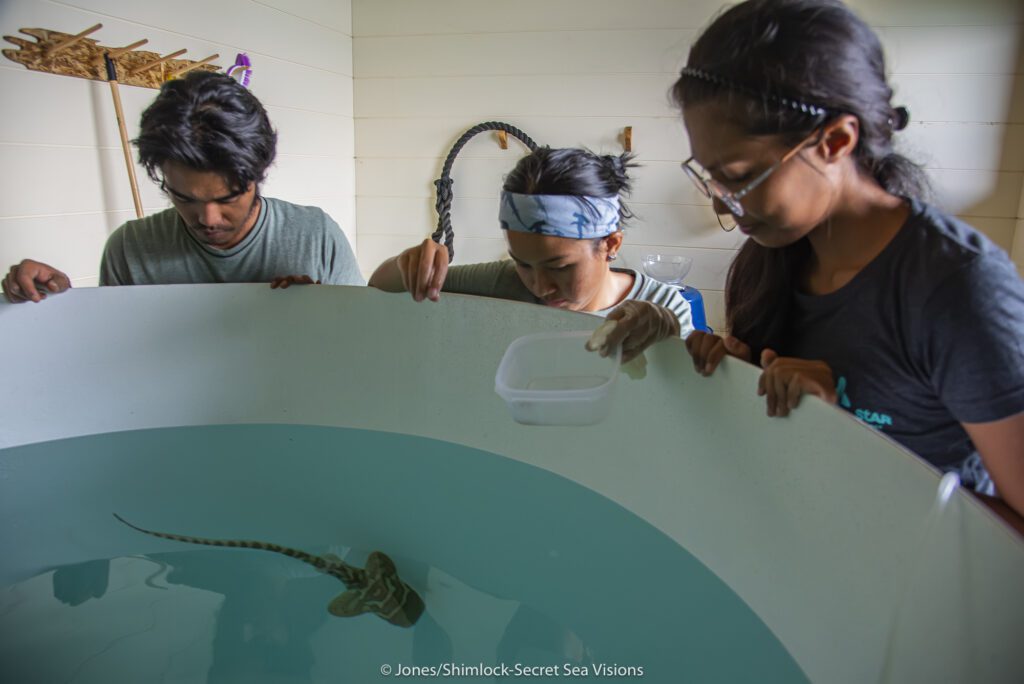
Mali “post-op”, in her big round tank, being monitored by Nesha and aquarists Agi and Kyra (offering Mali food)
Sharks can heal very quickly. When Mali’s caretakers determine she is healing properly, she will be transferred back to her open-ocean pen where she will continue to grow. When Mali reaches 80 cm she will be released into the protected waters around Misool. Then the re-wilding of Raja’s reefs will truly begin!
I hope to meet Mali again one day…when she has her spots.
Administrator’s note: For those of you who subscribe to National Geographic magazine, their July 2023 issue contains a story about ReShark and the release of the first Zebra shark into Raja’s waters, which happened earlier this year. In March, Nat Geo on-line, published a similar story. That article can be viewed by following this link, “500 baby sharks to be released” (Although this link requires a paid subscription, it is presently active and viewable as Nat Geo has kindly given us permission to share it. That status is likely to change, so view it now or subscribe!)
Burt Jones is the Bird’s Head Seascape’s Administrator. To learn more about him and his wife, Maurine Shimlock’s work, visit their Secret Sea Visions website.






































